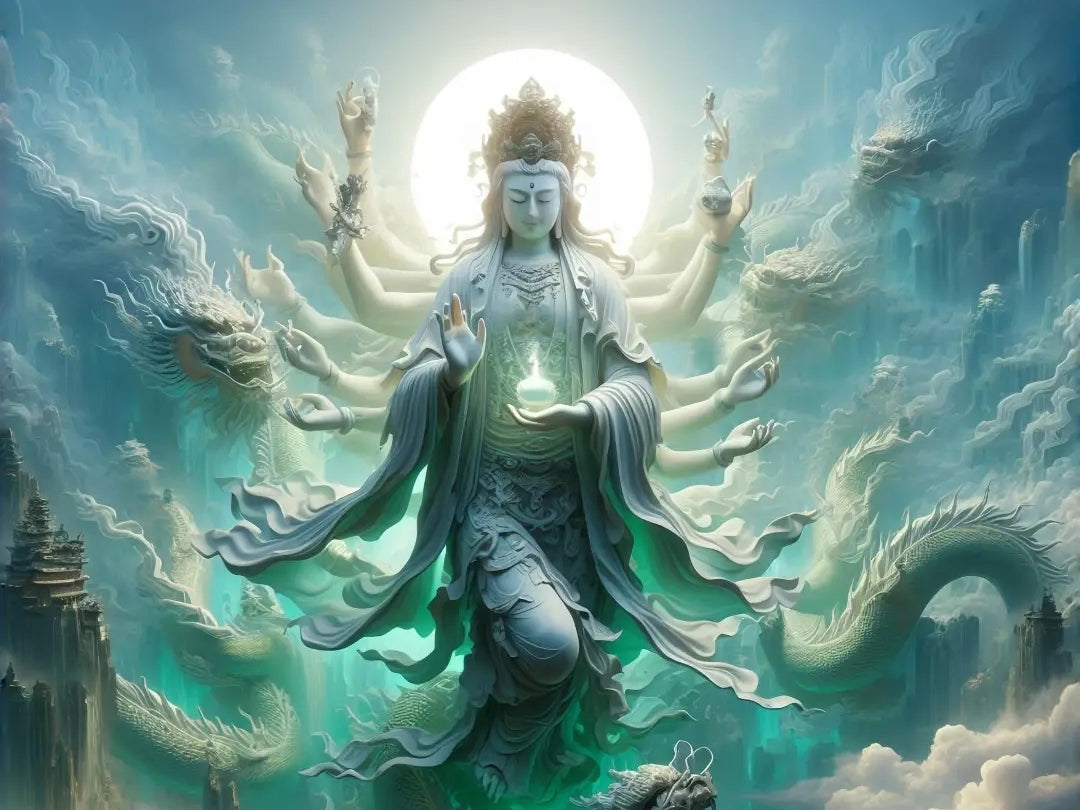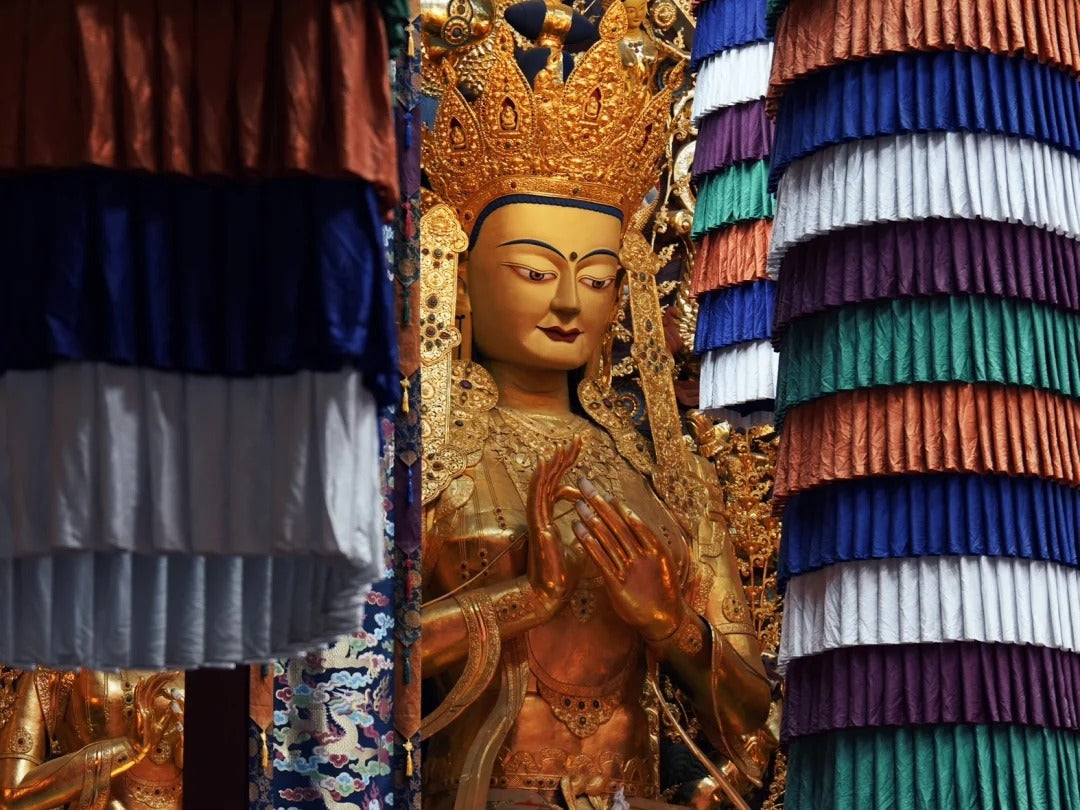In the tapestry of Tibetan Buddhism, few figures inspire both awe and devotion like Mahakala, the formidable Tibetan guardian deity whose wrathful aspect safeguards the Dharma and its practitioners. While his fierce visage may startle the uninitiated, each grimace and weapon he wields carries profound symbolic meaning—reminding us that compassion sometimes requires the strength to cut through ignorance and negativity.
Origins of Mahakala’s Wrathful Form
Mahakala’s roots lie in the compassionate Bodhisattva Avalokiteśvara. Legend holds that when Avalokiteśvara witnessed the endless suffering of beings, he vowed to protect the Dharma by any means necessary. His compassion transformed into a fiery protector, culminating in the form of Mahakala—whose name means “Great Black One” (Maha = great, kala = black or time).
Over centuries, Tibeto-Buddhist masters elaborated multiple Mahakala emanations—ranging from the peaceful White Mahakala to the terrifying Six-Armed Mahakala—each charged with specific protective functions. Yet all share the same mission: to vanquish obstacles that block the path to awakening.

Decoding Mahakala’s Iconography
Every detail of a Mahakala Thangka pendant tells a story:
-
Dark Blue or Black Skin: Symbolizes the depth of his power and the all-absorbing nature of his mercy—darkness that transforms rather than destroys.
-
Crown of Five Skulls: Represents the transformation of the five poisons (ignorance, attachment, aversion, pride, and jealousy) into the five wisdoms of a Buddha.
-
Flayed Skin Cape: Not literal gore, but a reminder that we must shed our ego’s false skin to reveal our true nature.
-
Chopper (Kartika) & Skull Cup (Kapala): The chopper severs delusion; the skull cup collects the nectar of liberated wisdom.
-
Fiery Halo: Encircling his form, the flames purify negative emotions like a blazing furnace.
Displayed in Mahakala Thangka scrolls, these symbols weave together to portray a protector who is both terrifying and tender—roaring at demons yet shielding devotees under his watchful gaze.
Mahakala in Tibetan Rituals
In Tibetan monasteries, Mahakala is invoked through protector pujas and empowerment ceremonies:
-
Daily Puja: Monks chant Mahakala’s mantra—*“Om Shri Mahakala Hum Phat”—*to clear obstacles from daily life and study.
-
Dharma Protection Rituals: Before important teachings or pilgrimages, Mahakala offerings ensure safe passage and spiritual integrity.
-
Monlam Festival: During Losar (Tibetan New Year) celebrations, public protector rituals feature masked dances of Mahakala, symbolically conquering the old year’s negativities.
These practices underscore Mahakala’s role as the Tibetan protector deity par excellence—vigilant, uncompromising, and unwaveringly compassionate.
From Canvas to Jewelry: Crafting Mahakala Pendants and Amulets
Modern artisans translate Mahakala’s potent iconography into wearable art:
-
Thangka Pendants: Miniature hand-painted Mahakala Thangka scenes are set inside brass gawu shrine boxes. Tiny appliqués of silver or gold leaf highlight his crown of skulls, while a lacquered backdrop intensifies his inky skin tone.
-
Silver Amulets: Using lost-wax casting or repoussé techniques, silversmiths carve Mahakala’s four arms and fierce face in sterling silver. Oxidized finishes deepen the dark hues, and delicate filigree frames echo monastic mandalas.
-
Mantra Engraving: On the reverse, the protector mantra is engraved in Tibetan script—ensuring that each Mahakala pendant carries both his image and his word of power.
Wearing a Mahakala Thangka pendant or silver amulet turns the body into a moving shrine—reminding us with every heartbeat that the protector’s energy is never far.
Integrating Mahakala’s Energy into Daily Practice
-
Morning Invocation: Gently touch your pendant at dawn and silently recite Mahakala’s mantra to set an intention of fearless compassion.
-
Midday Check-In: When stress or self-doubt arises, look to the Mahakala image on your jewelry. Let his fierce calmness ground you and reinvigorate your resolve.
-
Evening Reflection: Before sleep, hold your amulet and offer gratitude for the protection and clarity you received, dedicating any merit to the welfare of all beings.
By understanding Mahakala’s origins, iconography, and ritual roles, we see that his fearsome form is not aggression but the fiery embrace of compassion acting through strength. Whether rendered in a Thangka pendant or carved into silver, Mahakala’s presence calls us to face our own fears—transmuting them into the wisdom and courage needed to walk the path of awakening.





